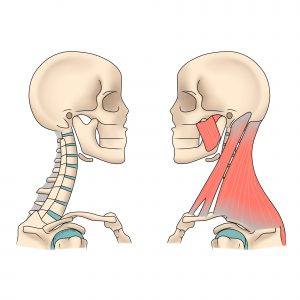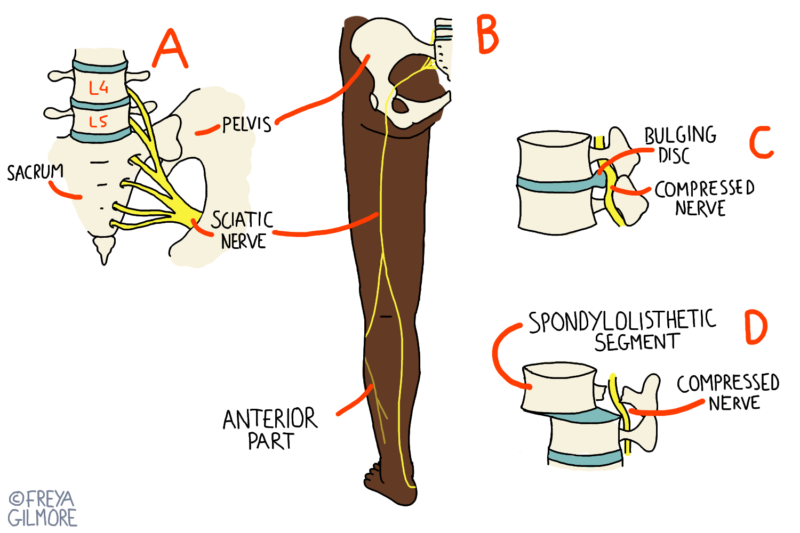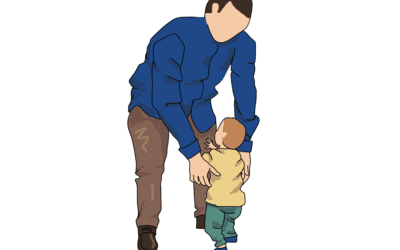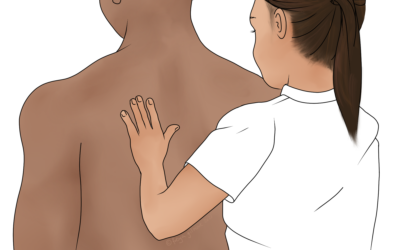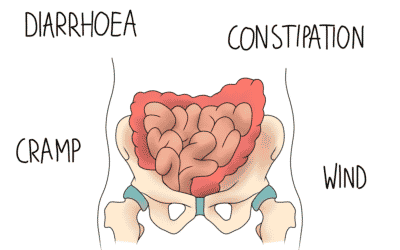One of the most common complaints we see in clinic is Sciatica. Symptoms appear anywhere along the sciatic nerve, which runs from the lower back, into the back of the thigh, and down into the foot. These symptoms are caused by irritation to the nerve, such as from compression by a muscle or bulging disc.
Symptoms of an irritated nerve can include:
- pins and needles
- shooting pain
- numbness
- weakness
You may feel only some of these, or you may cycle through a number of them. There may be a clear pattern to them, or they may be somewhat random.
What can Cause it?
People often associate sciatica with a problem with one of the discs in the spine. This is one of the most common causes. The nerves that come together to make up the sciatic nerve come from the lower back. If a disc in the spine at this level bulges, it can compress one of the nerves in question.
Disc bulges are often asymptomatic. Other times, they might come on suddenly and painfully. Either way, disc bulges can be managed over time.
A tight muscle along the nerve can also cause sciatica. The sciatic nerve runs close to, or sometimes directly through a deep muscle in the buttocks. If this muscle gets too tight, it can irritate the nerve. This might follow a change in activity such as picking up a new sport, or sitting in an awkward position for a prolonged period.
Very rarely, sciatica is a sign of something more urgent. The NHS advises you to call 999 or go to A&E if your symptoms include:
- sciatica on both sides
- numbness of the perineum
- difficulty going to the loo
- loss of feeling of needing to empty your bladder or bowels
Treating Sciatica
Treatment is multifaceted, aiming to reduce symptoms and address the original cause. For disc bulges, your osteopath may also want to look further up your spine for stiffness that caused the disc to be overworked. For muscular causes, they may advise ways for you to prevent tightening the muscle as well as treating it directly.
The NHS recognises the benefit of manual therapy for managing sciatica, but stresses the importance of exercise alongside. When a nerve is irritated like this, the brain is on high alert for danger in the affected area. Exercises, as prescribed by your osteopath, help to show the brain that the nerve is safe. This in turn allows the brain to turn down the amplification of pain, and symptoms to resolve.
Nerve pain is unlike other causes of pain. Someone with agonising sciatica is not necessarily expected to have a longer healing time than someone with mild symptoms. One of the strongest predictors of how long it will take to recover is how long symptoms have been ongoing.
If you have sciatica, book in for an appointment as soon as you can.














